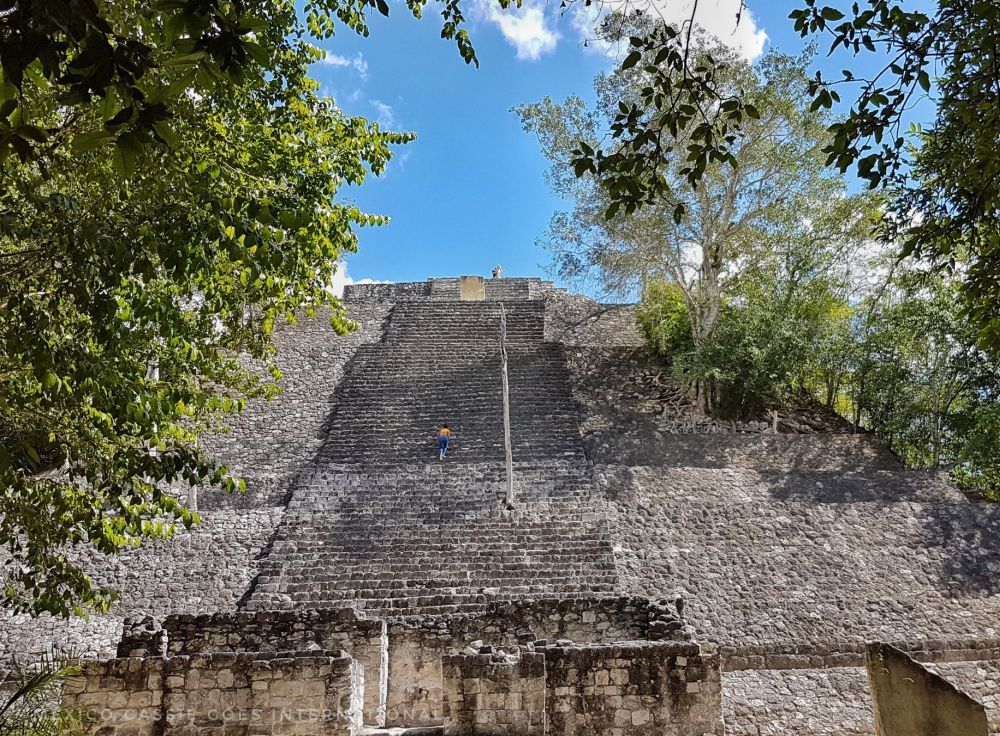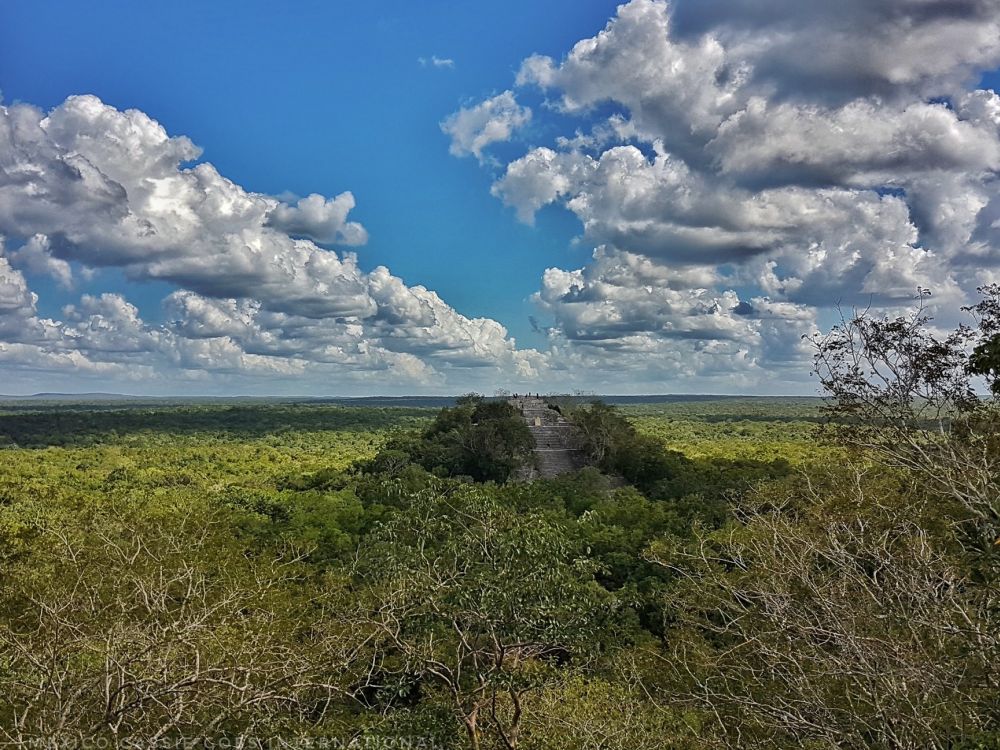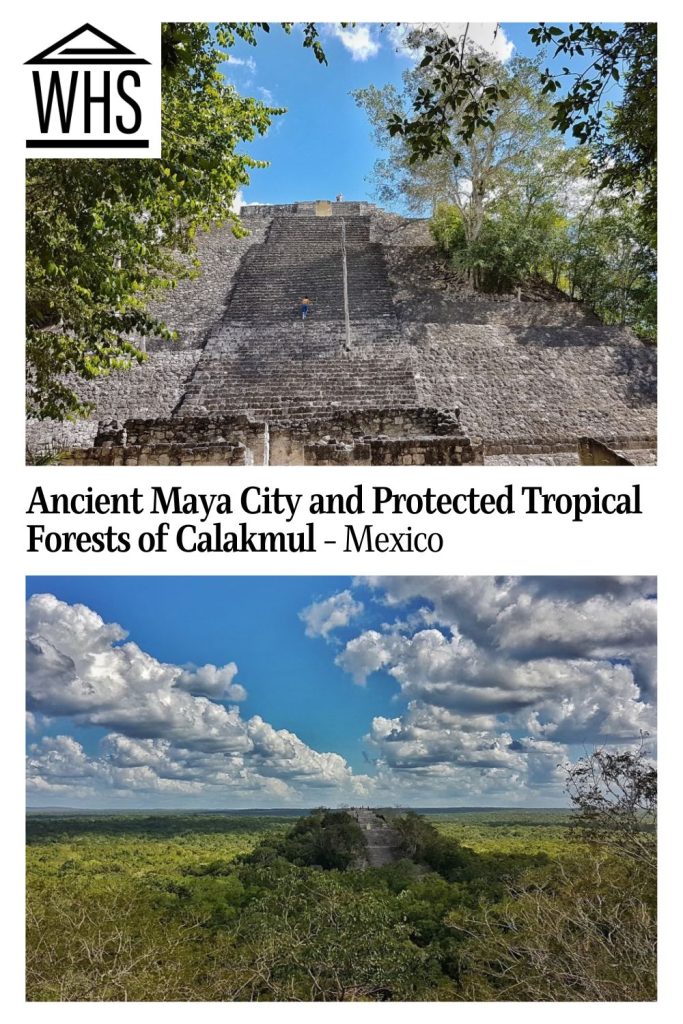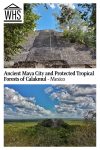Ancient Maya City and Protected Tropical Forests of Calakmul, Campeche
By Cassie
What is the Ancient Maya City and Protected Tropical Forests of Calakmul?
The ancient city of Calakmul is located in the south of the Yucatán Peninsula in Mexico and was a Maya capital for more than a thousand years. It has an interesting history in that its downfall preceded the arrival of the Europeans by hundreds of years. Since the city was abandoned, much of it is still intact and available for archeological study. The site also includes the Calakmul Biosphere Reserve, which is 3,300 square kilometers or 1,280 square miles, plus a buffer zone more than twice as big.
Disclosure: This article contains affiliate links. Making a purchase through an affiliate link will mean a small commission for this website. This will not affect your price. Privacy policy.

Why is Calakmul a UNESCO World Heritage site?
The original UNESCO designation included just the Maya city of Calakmul; the current property includes the Calukmul Biosphere Reserve as well.
According to UNESCO, “The city of Calakmul played a key role in the history of this region for more than twelve centuries and is characterised by well-preserved structures providing a vivid picture of life in an ancient Maya capital.” It covers 1500 years of the growth of the society and how it adapted to the natural setting of the forest around it. “It represents an exceptional testimony to a long-living civilization and offers a unique opportunity to understand both the foundations of its florescence and the causes of its collapse.” Some of the structures are “unrivalled examples of Maya monumental architecture.”
The forest around the city shows evidence of how the Maya interacted with and changed the environment around them. Some indigenous groups today in the area still practice the same management traditions.
The biosphere reserve is incredibly biodiverse and is one of the largest in the world, “encompassing all subtropical and tropical ecosystems from central Mexico to the Panama Canal.” It includes many endemic and threatened species.

What can you expect on a visit to these ruins?
Visiting Calakmul isn’t for the faint hearted but anyone who does make the trek into the Yucatan jungle will be amply rewarded by the experience of seeing stunning archaeological remains set in lush jungle.
I had wanted to visit Calakmul for a long time so when the opportunity to do so presented itself, I grabbed it with both hands and made it a reality. Driving from our home in Mérida was an experience in itself as we moved further south on the peninsula, from the flat dry north to the hillier Campeche and finally into the jungle-covered southern Campeche.
From the road, it’s a two-hour drive through the isolated Calakmul Biosphere Reserve to reach the entrance to the Calakmul ruins. It’s easily possible to spend an entire day in the jungle, moving from ruin to ruin, exclaiming over stelae and pyramids, so don’t forget to take enough water and snacks to keep you going as there are no facilities (except bathrooms) on site.
There are over 6000 structures at the site, with about 1000 in the central core. They are numbered, and structure 2, on the central plaza, is the largest pyramid in the Maya world. Structure 1 is also a pyramid, and some brightly-painted frescoes have been found there.
Among the many pyramids and temples in the core there are also a total of 117 stelae, which are tall stone pillars that are sculpted with bas-relief images. Many are quite eroded, but on some of them you can discern the images.

Is Calakmul worth visiting?
Absolutely, yes. If you enjoy exploring Maya archaeological sites, then this is an experience you will never forget. It does require time, though, as the nearest small town, Xpujil, is far from everywhere. To make the most of a trip to visit Calakmul, set aside at least three days. The new Tren Maya, when it is finished, will make this easier.
What types of travelers will enjoy visiting Calakmul?
Anyone interested in the Maya and pre-Columbian history in Central America will want to visit this site.
Tips for visiting the ruins and biosphere
If you are visiting under your own steam, it is imperative to go with a full tank of gas, plenty of water and snacks as inside the biosphere there is no access to services and no cell reception. Give yourself plenty of time. Once you enter the park, it can take an hour to get to the ruins themselves because the road has potholes and animals may cross the road in front of you.
Your other option is to take a day tour. These are available from Bacalar, Xpujil or Campeche.
While you’re in the area, be sure to visit some of the other equally impressive Maya archaeological sites such as Becan, Balamku, Xpujil and Chicanna. Elsewhere in the Yucatan you can visit other UNESCO-listed Maya ruins: Chichen-Itza, Uxmal, and Palenque.
If you’re really into Maya ruins and want to see a lot of both well-known and lesser-known sites, try this four-night, five-day tour.
As far as where to stay, the Hotel Puerta Calakmul is near the entrance gate to the park. Most visitors, though, stay in Xpujil, the nearest town, or in the bigger towns of Campeche, Chetumal, or Bacalar.
There are also plenty of hiking trails in the biosphere reserve. Make sure you are fully equipped for hiking in the forest: sturdy shoes, insect repellent, water, food, etc. If the natural world interests you more than ancient ruins, also look into visiting Sian Ka’an biosphere reserve, also in the Yucatan peninsula.
There is a separate fee to both the biosphere and the ruins.
The site is open 8am-5pm but you can enter the biosphere reserve earlier. Last entrance to the biosphere is at 3pm.
Where is Calakmul?
The nearest town is Xpujil. It is located 30 minutes from the entrance to the Calakmul Biosphere Reserve.
It’s not recommended to try and visit Calakmul by bus, although it’s possible to get to Xpujil this way. From there you’d need to either hitch or take a (very expensive) cab to the ruins.
For more information about Calakmul, its opening hours and admission fees, see its official website.
Have you been to Calakmul? If so, do you have any additional information or advice about this UNESCO World Heritage site? Please add your comments below!

